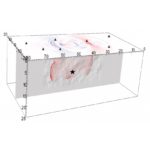With help from DOE supercomputers, a USC-led team expands models of the fault system beneath its feet, aiming to predict its outbursts. For their 2020 INCITE work, SCEC scientists and programmers will have access to 500,000 node hours on Argonne’s Theta supercomputer, delivering as much as 11.69 petaflops. “The team is using Theta “mostly for dynamic earthquake ruptures,” Goulet says. “That is using physics-based models to simulate and understand details of the earthquake as it ruptures along a fault, including how the rupture speed and the stress along the fault plane changes.”
Sponsored Guest Articles
Lenovo Maximizes HPC Resources via Partnership with SchedMD and Slurm Workload Manager
[SPONSORED GUEST ARTICLE] In HPC, leveraging compute resources to the maximum is a constant goal and a constant source of pressure. The higher the usage rate, the more jobs get done, the less resources sit idle, the greater the return on the HPC investment. At Lenovo, with its….
White Papers
Energy efficiency drives HPC to the cloud
The high-performance computing (HPC) market is witnessing a notable shift towards the cloud, partially driven by the benefits of enhanced energy efficiency. According to Hyperion Research nearly every organization running HPC workloads is either already using or investigating the cloud to accelerate application performance, with the cloud market for HPC workloads forecast to reach $11.5 […]
 Featured RSS Feed
Featured RSS Feed
- Why FinOps Needs DataOps ObservabilityIn this special guest feature, Chris Santiago, Vice President/Solutions Engineering, Unravel Data, talks about controlling cloud spend through three phases of the FinOps lifecycle.
 More News from insideBIGDATA
More News from insideBIGDATA
- Artificial Intelligence Means Smaller Teams Doing More with Less Makes the Small Autonomous Teams Structure Even More Important
- Nature Communications Publishes Zapata AI Research on Generative AI for Optimization
- The Solution to Data in Motion Is to Just Stop
- What AI Could, Should, and Would Do
- Video Highlights: Gemini Ultra — How to Release an AI Product for Billions of Users — with Google’s Lisa Cohen
- What Happens When We Train AI on AI-Generated Data?
- Where Artificial Intelligence Is Making a Difference in Healthcare




